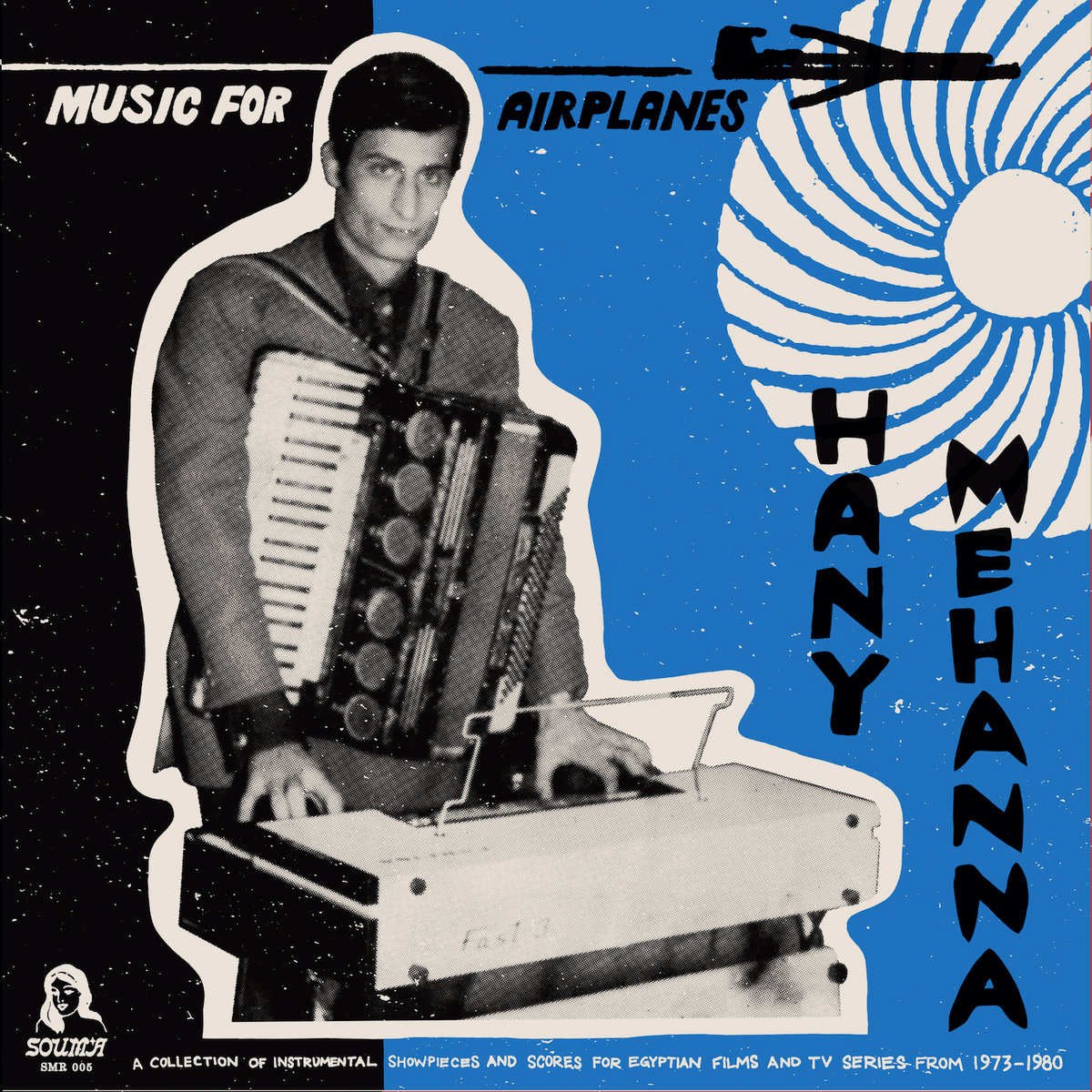 Hany Mehanna is a key figure in the development of keyboards in Asian music. As a young man he played accordion, organ, and synth in the orchestra of legendary singer Umm Kulthum and—along with Ammar Al-Sheriyi—learned to create quarter tones by using oscillators. In a later prolific period composing music for 93 films and 38 television series, Mehanna forged his own distinctive sound: a balance of traditional Arabic melody types or maqams and hypnotic experimental electronics. Remastered from his personal reel-to-reel tapes, this album showcases that balance on 19 otherworldly tracks. I like the fact I can never predict what any piece will sound like based on how it starts, even on very short tracks. Mehanna’s only other solo album, The Miracle Of The Seven Dances, was reissued in 2018 after being rediscovered in a record shop in Casablanca.
Hany Mehanna is a key figure in the development of keyboards in Asian music. As a young man he played accordion, organ, and synth in the orchestra of legendary singer Umm Kulthum and—along with Ammar Al-Sheriyi—learned to create quarter tones by using oscillators. In a later prolific period composing music for 93 films and 38 television series, Mehanna forged his own distinctive sound: a balance of traditional Arabic melody types or maqams and hypnotic experimental electronics. Remastered from his personal reel-to-reel tapes, this album showcases that balance on 19 otherworldly tracks. I like the fact I can never predict what any piece will sound like based on how it starts, even on very short tracks. Mehanna’s only other solo album, The Miracle Of The Seven Dances, was reissued in 2018 after being rediscovered in a record shop in Casablanca.
The album kicks off with “Hanady” blipping along like a wheezing, psychedelic, video game belly dance augmented by electric violin and the guitar of Omar Khorshid. On this track, and on the entire album, nothing is allowed to limp along into over-repetiive normality or to descend into an indecipherable mess. "Haya Ha’ira” is more raw, blasting into being with a razor blade guitar-like slashes and dazzling percussion and it’s over too soon. Bizarrely, the precisely chopped rhythm of "Walad Wa Bint” is virtually a compete blueprint for the verse singing on the early Stiff Records 45 “(I Don’t Want To Go To) Chelsea.”
“Rhela” has the kind of galloping rhythm and lustrous twang often associated with doomed British producer Joe Meek, as Mehanna throws hypnotic organ phrases over a frenzied beat. His breathtaking ability to layer electronics, strings, and solo instruments is evident on the library robo-funk of "Less Al Thulata” and the spaced out "Al Qina’ Al Za’ef” with (I think) twinkling synth, a lonely horn, smooth strings, and what sound like wah wah imitation vocals. There are actual vocals on "Dal Al Omr Ya Waladi,” an impressive dusky moaning which is a good counterpoint to the intriguing reedlike instrument which shares carrying the melody. Again, the mix is fabulous and the atmosphere beautifully relaxed.
On the cover Hany Mehanna almost looks like one of the heroic resistance fighters from Gillo Pontecorvo's documentary The Battle of Algiers, except—rather than a machine gun—he’s got an accordion strapped over his shoulder and stands in front of a small Farsifa organ. It is worth remembering that Farfisa organs have been used by everyone from Reich and Glass to Suicide and Cabaret Voltaire, as well as Giorgio Moroder, Pink Floyd, Sly Stone, Miles Davis, Percy Sledge, XTC, Sam The Sham, K.Frimpong, and Stereolab. Back on this album sleeve, Mehanna looks for all the world like he is sending a message on an early 1990s fax machine. In the top right a plane heads East across a circular object which might be a representation of the sun, or a piece of exotic garb I don’t recognize. The image is reminiscent of the cover from the cassette release Relaxation Tape For Solo Space Travel by The National Pool, the concept of which purports to be an actual aid for would-be cosmonauts. Music For Airports stays within the earth’s atmosphere but it definitely travels to some subtle and glamorous places. The album fell between the cracks a little with its December 2021 release date.
I haven’t had time to research the films and TV shows for each track, but the imagination may quickly run to mustachioed detectives, flared trousers, glamorous girls fallen in with a bad crowd, cool cars, cocktails, speedboats, nightclubs, ill-gotten gains, spies, shortwave radio, fistfights, heat and dust, baba ganoush, gloriously melodramatic day time soaps, switchblades, Sid James, cigarette holders, white dinner jackets, and all that jazz. The album title makes sense in the context of the modernizing of Egyptian economy in the 1970s, with a jet-set, Operation Nimbus Moon, and President Sadat standing on a destroyer when reopening the Suez Canal. Hany Mehanna's tunes fit in with any concept of freedom, and his rhythms showed up in popular songs which soundtracked the Arab Spring of 2010-12. This collection ends on a real high with the thrilling and poignant "Damat Alam" sandwiched between the Opening and End themes to “Al Dawarma.” No need to round up the usual suspects such as Basil Kirchin or eden ahbez. I think this is the beginning of a beautiful friendship.
Read More

